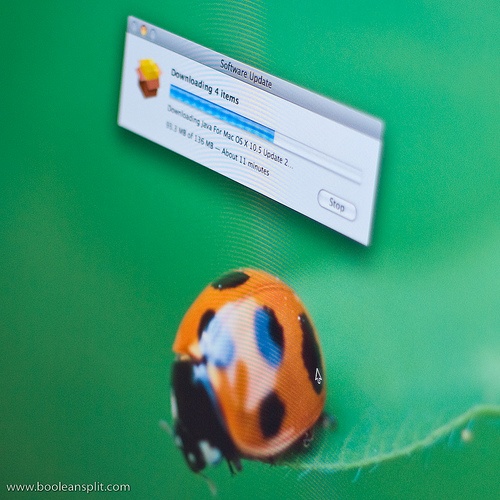Give It a Cleaning
Never underestimate what a good physical clean can do for a computer. Computers get full of dust and lint, and fans and vents can get clogged. If a computer is suffering from overheating, random shut-downs or noisy whirring, it may not need repairing as the culprit could simply be an abundance of dust. Use short bursts of compressed air to displace dust in hard to reach places and give the rest a wipe with lint-free, anti-static cloths. Of course, unplug the power and be very careful when cleaning delicate components.
Software Repair
New computers are always much faster than old ones, and it’s not just because they have newer components. As a computer is used over time, new pieces of software are installed on it, hard drives get filled and it is running more and more processes each time you boot up. Schedule a regular virus scan to get rid of malware and adware, uninstall programs that are clogging up your desktop and disable rarely used software from booting at the start-up. Alternatively, a complete fresh install to a faulty operating system, while a drastic measure, will really get everything back to running smoothly (make sure you do a full back-up, though). You’d be surprised by how much performance can be gained from repairing an existing system.
Hardware Repair
If your computer still has performance problems after a software repair, then it could mean the issue is with your computers hardware. Unfortunately hardware can break, with the most common causes being overheating, liquid damage and impact related damage. All is not lost though, as hardware can be easily repaired or replaced by a computer repair technician. Generally hardware repairs are priced based on the time taken to complete the job and the cost of the replacement part, if one is needed. Along with the expertise needed to successfully make hardware repairs, repair technicians will also be able to easily identify the exact issue with a broken computer. If the offending item of hardware is easy to identify (e.g. a broken CD drive), then you can always have a go at fixing it yourself; parts can be ordered online through the brand manufacturer. You can also find second hand parts on eBay, however buying straight from the manufacturer will ensure your new parts have a full warranty. Although fixing it yourself may work out cheaper, you do run the risk of doing further damage to your computer if it’s done incorrectly or haphazardly.
Upgrading
Unfortunately, there is only so much that uninstalling and repairing can do. If you are still suffering from PC performance issues, a few bits may need upgrading. Fortunately, replacing and upgrading many computer components is very easy, and even technophobes should be able to manage it. Buying more RAM is perhaps the quickest and most efficient way to boost performance, and it is simply a case of opening up the case and slotting RAM into the motherboard. There are compatibility issues, so check what RAM you currently have before you buy some. If you’re a heavy downloader or you find that you keep running out of disk space, a new hard-drive is a practical upgrade, and external hard-drives can simply be plugged into a USB port. For gamers, a new graphics card may be a good upgrade and, while they can be a bit fiddly to fit, practical online help can guide you through the install. Featured photo credit: Silver stethoscope lying down on an laptop, toned blue via Shutterstock and inline photo by Robert S. Donovan via Flickr (CC BY 2.0)
